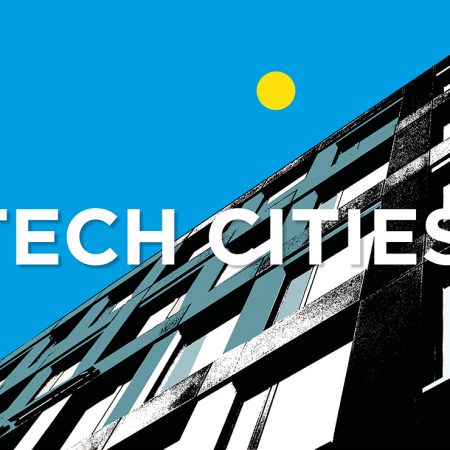Companies active in the Life Sciences space are those involved in sciences dealing with living organisms and life processes, including biology, pharmaceuticals, biomedical technology and nutraceuticals. HealthTech, on the other hand, covers companies that provide mobility and other information technologies to improve healthcare delivery while decreasing costs. It entails the use of technology and services – including cloud computing, Internet services and social mobility – to optimize patient-centric healthcare.
Developments in artificial intelligence, machine learning, and data-driven health solutions are all accelerating medical development as tech companies enter the health sector. Boston tops our sector index as a higher education powerhouse and global Life Sciences hub. Other research locations do well too, with Mainz, Germany and Oxford – two source locations for Covid-19 vaccines from BioNTech and Astra-Zeneca respectively – ranking 13th and 14th in our list of cities.
Linkage Locations
While US cities top the index, led by Boston, cities in Asia Pacific, notably Chinese cities, and across EMEA are all major players. Many cities in these regions offer cost advantages to occupiers without sacrificing access to skills, funding, expertise, and wider tech sector cross-pollination.
US cities dominate the Life Sciences and HealthTech rankings, accounting for six of the top 10, thanks to concentrations of funding and a vast domestic market. Cities in the UK, Australia, France, and China are also represented in the top 10, with London, Melbourne, Paris, and Beijing claiming top spots.
Boston is a top research and education destination, with two of the top universities globally located within the city. New York, San Francisco, and Silicon Valley benefit from deep linkages between Life Sciences, the wider tech space, and business, boosting them to the top of the index. These same linkages ensure that London is the top non-US city for the Life Sciences and HealthTech subsector.
Chinese cities, with strong links to government, exceptional research and development (R&D) networks, and top universities producing ample amounts of research, do very well across the Tech Cities indices and particularly well in the Life Sciences and HealthTech space. Beijing (9th), Shanghai (19th), and Suzhou (23rd) are leading locations for science and health innovation within China.
Savills Tech Cities: Life Sciences and HealthTech Index
Source: Savills Research. Tech sector verticals: Digital Health, FemTech, HealthTech, Life Sciences, LOHAS & Wellness, Oncology & Wearables & Quantified Self
The old college try
Academia drives innovation within this subsector – huge amounts of funding and research are funnelled through top STEM universities, exposing future talent to the sector before they enter the workforce. R&D within the Life Sciences and HealthTech space often takes place within university labs, often driven by government funding or in partnership with private ventures.
Research output from universities can demonstrate the depth and breadth of the innovation that is happening in Life Sciences and HealthTech locations. In 2022, Boston, New York, Paris, and Beijing had each produced over 2,000 journal-published articles according to Nature, a leading scientific journal. These cities led the pack by far with their contributions to academia.
Top universities produce the top talent for Life Sciences and HealthTech firms, with many organisations choosing their headquarters or satellite locations based on the locations of these leading institutions – to ensure that they can take their pick of the top graduates. These firms will also bring the high-earning jobs that graduates desire, creating a virtuous cycle of innovation and growth in many Life Sciences and HealthTech hubs.
Business and buzz
How hospitable government and regulation are to business can play a role in where firms choose to locate, and with such high start-up costs for firms in this sector, knowing where is best to do business is key. In a fiercely competitive global market for talent, city attractiveness also matters.
Prospective workers within the Life Sciences and Healthtech space value quality of life, cost of living, housing affordability, and myriad other factors which can bring a city to front of mind. Smaller, cleaner, and more liveable cities such as Mainz, Oxford, and Raleigh-Durham have attracted increasing numbers of workers and companies over recent years, as people continue to prioritise their health and wellbeing.
The lab premium
Life science real estate, specifically laboratory and specialist HealthTech manufacturing space, is particularly complex and difficult to develop due to the technical specification required and build costs of these facilities are typically higher than for standard offices. In many of the key clusters across the world, there is a significant undersupply of suitable real estate, leading to an imbalance of supply and demand.
Both large organisations and small start-ups across the Life Sciences and HealthTech sector are increasingly looking to secure space in key locations so they can continue to research and innovate. This strong level of demand has led to the emergence of a premium for fully fitted lab space of 76% across the UK and Europe, according to research by Savills UK.
Future-proofing
A challenging economic environment, high inflation, and elevated energy costs are compounding financial pressures on the energy- and talent-intensive Life Sciences and HealthTech space in particular. While the sector is widely seen as ‘recession-proof’, the coming years will not be without challenges. However, steady levels of investment, a growing desire and need for innovation within health, wellness, and Life Sciences, and government support for the sector’s growth means that Life Science and HealthTech are well placed to weather the storm of tech turbulence.
Methodology:
Our 2023 Tech Cities ranking measure a city’s business environment, tech environment, city buzz & wellness, talent pool, and its strength and depth across different tech sub sectors:
*for each of the 11 Tech Sub sectors (AgTech & FoodTech, CleanTech & ClimateTech, Deep Tech, E-Commerce, FinTech, Industrial Tech, Life Sciences & HealthTech, MediaTech, MobilityTech, Software, SpaceTech). These are aggregated to form our overarching Tech Cities index.



